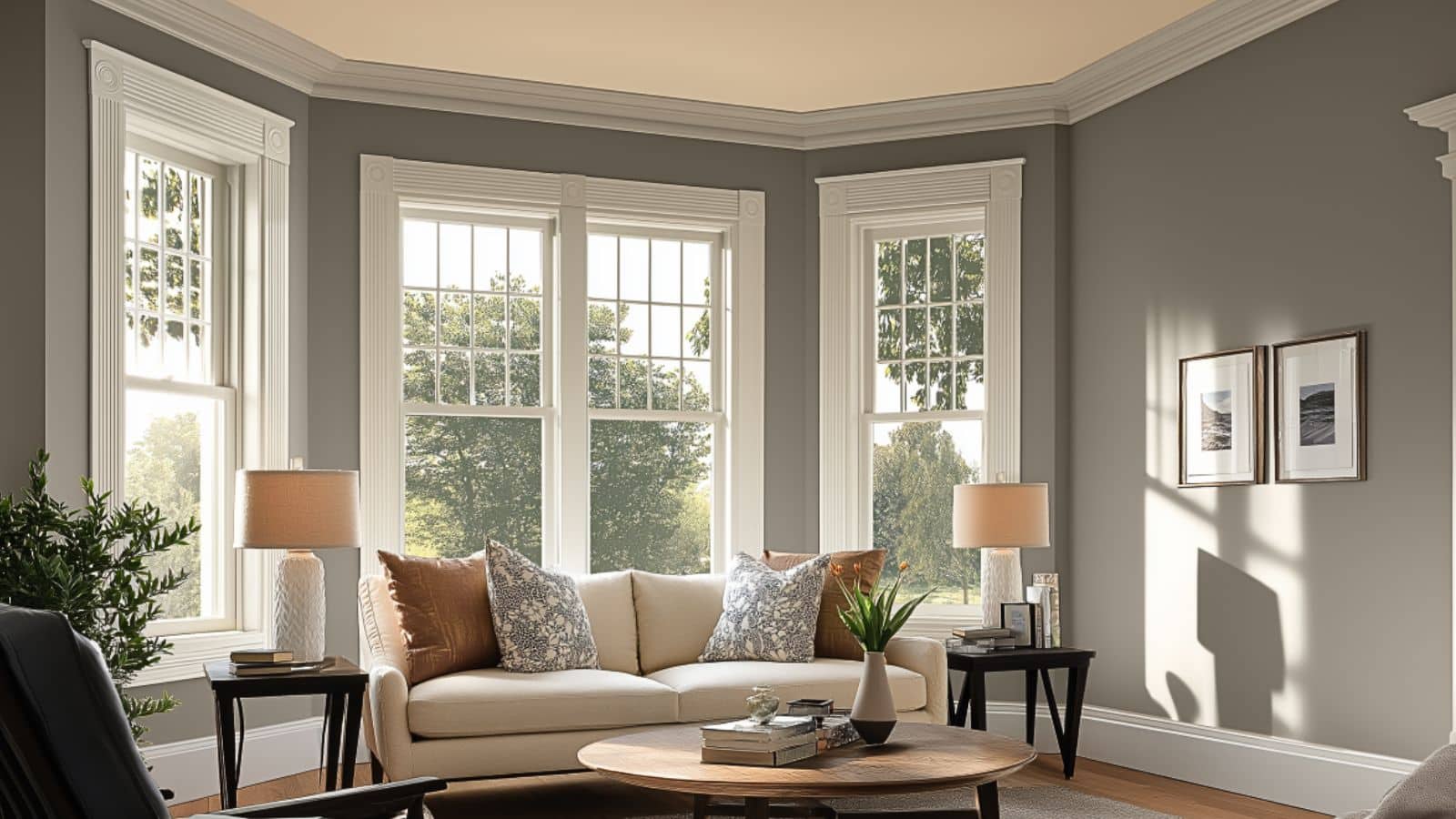Timeless Gray Living Room Design for Any Style Home: How to Make Gray Work Beautifully in Every Space
Table of Contents
Gray has long been a favorite in interior design, and for good reason—it’s versatile, timeless, and effortlessly chic. Whether your home leans modern, traditional, farmhouse, or coastal, a well-designed gray living room can ground the space while allowing you to build character, mood, and depth.
According to a recent survey by Houzz, over 60% of homeowners opt for neutral living room palettes, with gray being the most popular choice. It’s more than a passing trend—it’s a design staple that can be warm or cool, bold or understated, classic or edgy.
This post explores how to craft a timeless gray living room design for any style home. We’ll explore the best gray paint tones, ways to mix textures and materials, styling with furniture, lighting, and decor, and how to avoid common pitfalls like making the space feel flat or cold. You’ll leave with a curated set of ideas tailored to your home style, plus visuals and prompts to bring your space to life.
Choosing the Right Shade of Gray for Your Living Room
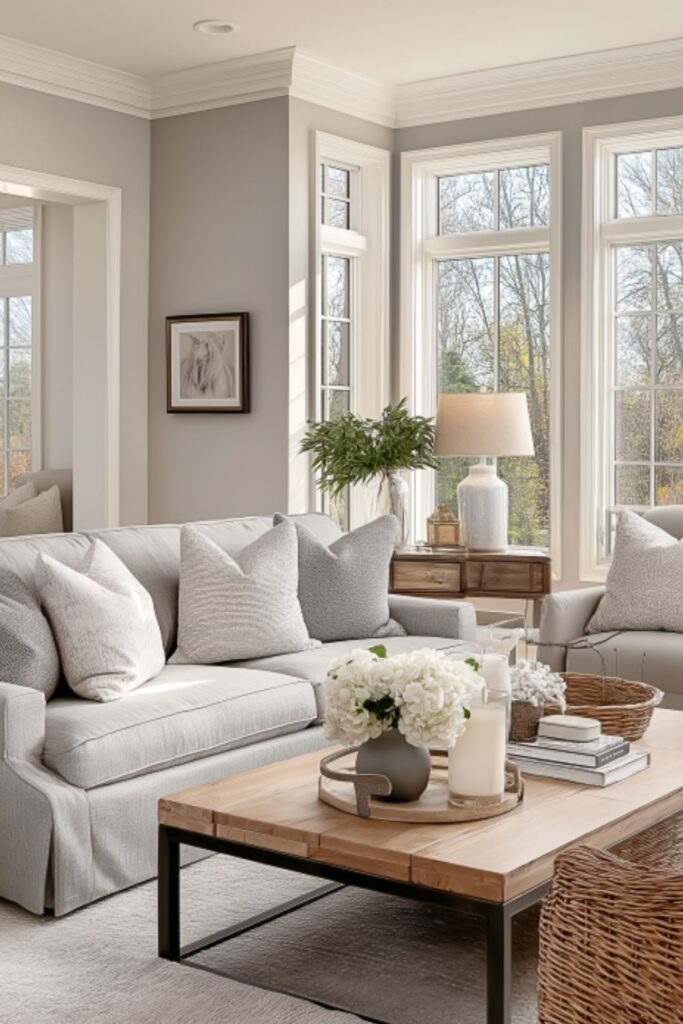
The success of your gray living room starts with selecting the right shade. Gray isn’t just one color—it spans a spectrum from cool steel to warm greige, and the undertones make all the difference.
Understand Warm vs. Cool Grays
Cool grays typically have blue, green, or purple undertones and suit modern, minimalist, or coastal spaces. Warm grays lean toward beige or taupe and work beautifully in traditional, rustic, or transitional homes.
Match to Natural Lighting
Rooms with lots of sunlight can support cooler grays, which won’t appear too cold. In contrast, north-facing or dimmer spaces benefit from warmer gray tones to prevent a dull, shadowy look.
Try Swatches in Daylight and Lamplight
Paint behaves differently depending on lighting conditions. Always test a few shades on your wall and observe how they shift from day to night.
Gray Shade Guide
| Gray Type | Undertone | Best For |
|---|---|---|
| Cool Gray | Blue, green | Modern, coastal, Scandinavian |
| Warm Gray | Taupe, beige | Traditional, farmhouse |
| Greige | Gray-beige mix | Transitional, boho, versatile |
| Charcoal Gray | Deep neutral | Industrial, moody, luxe |
Layering Textures to Keep Gray From Feeling Flat
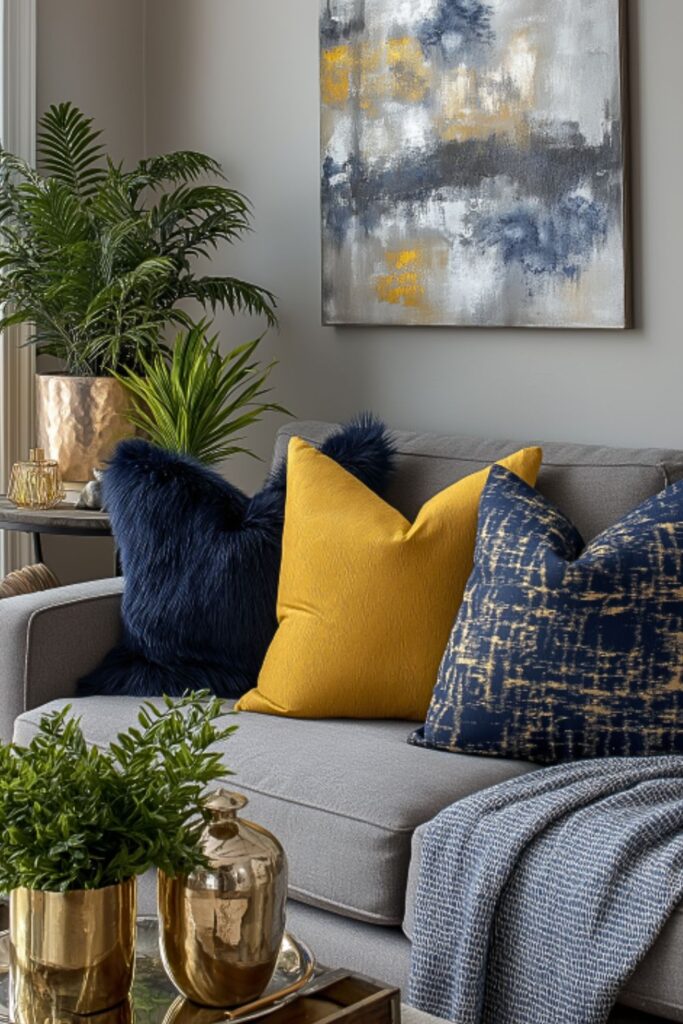
Gray’s neutrality is both a strength and a risk—it can feel sophisticated, but if not layered properly, it can also come off cold or monotonous. The key to avoiding this? Texture.
Mix Materials for Depth
Combine velvet, linen, leather, wool, and wood in various tones. A gray linen sofa against a chunky knit throw, wood coffee table, and a woven rug creates visual and tactile richness.
Use Accent Pieces to Introduce Softness
Think cushions with fringe, boucle chairs, shag rugs, or pleated curtains. These bring in movement and softness while staying within a cohesive color scheme.
Create Contrast Within the Palette
Not all grays should match exactly. Use light, medium, and dark grays together. This keeps the eye moving and the space feeling multidimensional.
Texture Layering Checklist
| Element | Material | Role |
|---|---|---|
| Sofa | Linen or velvet | Base softness |
| Rug | Wool or jute | Grounding element |
| Throw Blanket | Knit or sherpa | Cozy layer |
| Coffee Table | Wood or marble | Organic contrast |
Furniture Ideas That Work With Every Gray Living Room
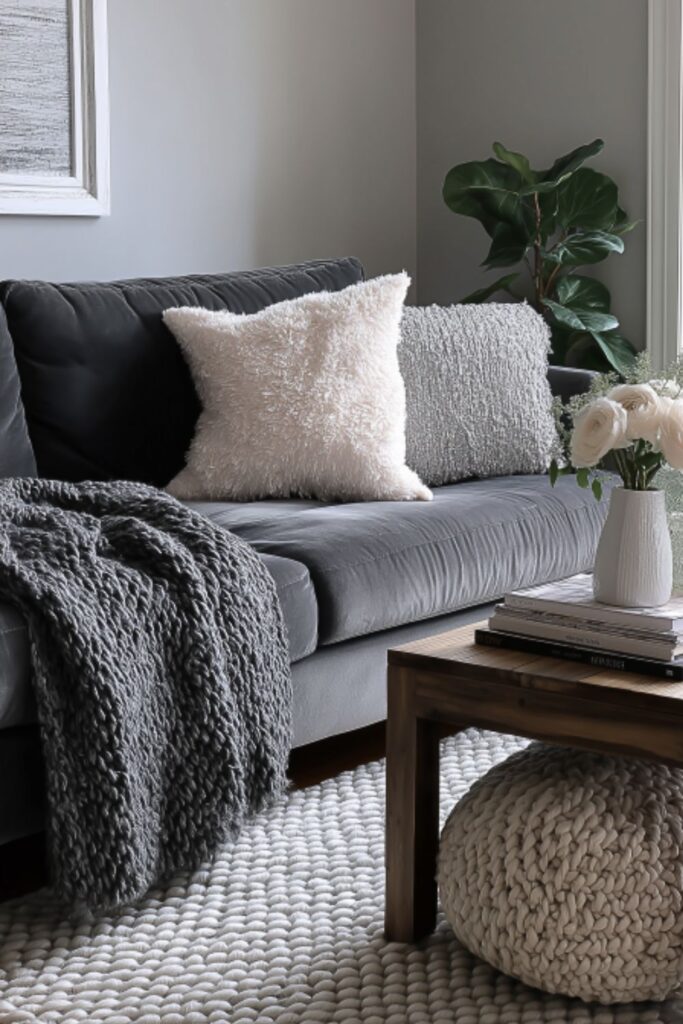
Once you’ve chosen your wall color and added texture, it’s time to bring in furniture that complements and elevates your gray palette. The good news? Gray works with just about everything.
Anchor With Neutral Basics
Start with neutral-tone anchor pieces like a gray sofa, beige accent chairs, or a white media console. These give you flexibility to layer in different styles over time.
Use Accent Furniture to Add Personality
A navy velvet ottoman, brass side table, or rustic wooden bookshelf can stand out against a gray backdrop without clashing. These accents keep the room from looking one-note.
Mix Styles for Balance
Incorporate a blend of styles. A tufted couch, sleek metal lamp, and rustic bench can coexist beautifully with gray, letting the room reflect a well-traveled, lived-in look.
Furniture Styling Table
| Piece | Style Options | Why It Works With Gray |
|---|---|---|
| Sofa | Modern, traditional | Neutral base, large impact |
| Accent Chair | Rattan, boucle, leather | Adds warmth and texture |
| Coffee Table | Glass, wood, marble | Contrasts and balances the palette |
| Console/Storage | Painted or natural wood | Offers visual variety and utility |
Accents That Make Gray Sing—From Art to Pillows
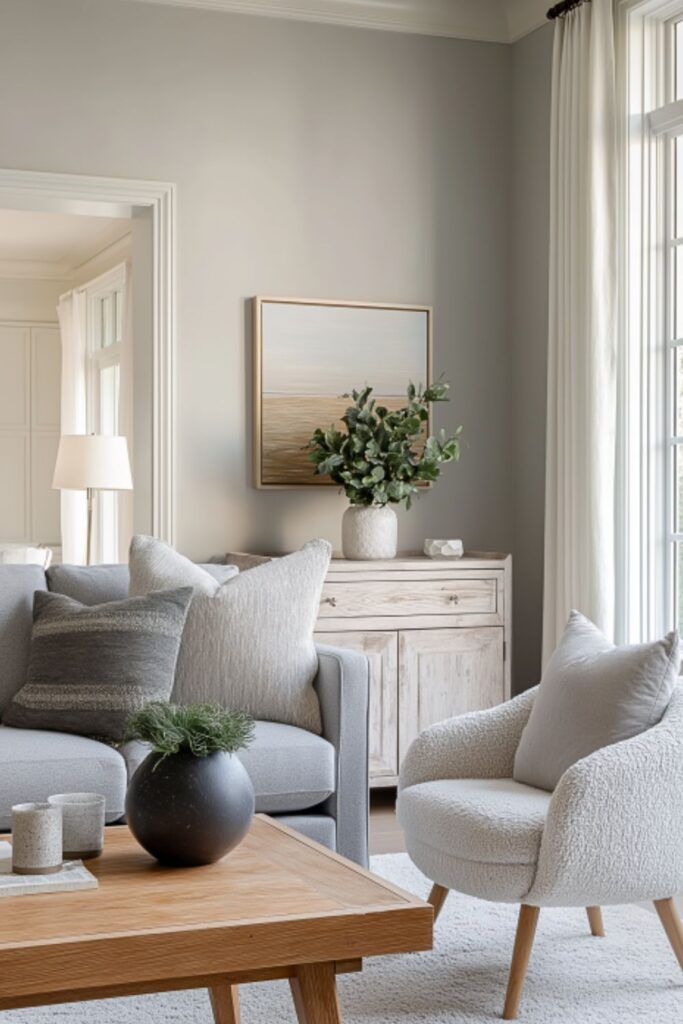
A gray living room needs accents to avoid feeling overly neutral. The beauty of gray is that it acts as a perfect backdrop for color, pattern, and art.
Add Pops of Color
Gray pairs wonderfully with blush, mustard, navy, sage, and terracotta. Introduce these through cushions, vases, or throws for visual energy that doesn’t overwhelm.
Incorporate Metallic Finishes
Gold, silver, and black iron details bring elegance and edge. Think gold-framed mirrors, silver lamps, or matte black curtain rods.
Use Wall Art and Mirrors Strategically
A large abstract canvas or a collage of smaller frames above the couch draws the eye and breaks up the gray tones. Mirrors also reflect light, adding airiness.
Accent Layering Table
| Accent Type | Material/Color | Placement Tips |
|---|---|---|
| Pillows | Patterned, velvet | Vary sizes and textures |
| Artwork | Abstract, photography | Above sofa or fireplace |
| Mirrors | Framed in gold/black | Across from windows for light |
| Plants | Greenery in gray pots | Corners, shelves, side tables |
Lighting a Gray Living Room With Style and Warmth
Lighting can make or break the tone of a gray space. Done well, it enhances warmth and keeps the room from feeling too moody or dim.
Use Layered Lighting
Include overhead lighting, table lamps, floor lamps, and even sconces if possible. This adds dimension and allows for flexibility depending on the time of day.
Choose Warm Bulbs
Stick with bulbs that give off a soft white or warm glow. These will enhance the richness of your gray tones and make the room feel inviting.
Add Statement Fixtures
Consider a chandelier or pendant light with a sculptural design. It becomes an eye-catching feature and brings drama to a subtle color scheme.
Lighting Tips Table
| Type of Light | Style Idea | Ideal Placement |
|---|---|---|
| Pendant Light | Globe or drum shade | Overhead or in the center |
| Floor Lamp | Tripod or arc shape | Beside seating or in corners |
| Table Lamp | Ceramic, metallic | Side tables or console |
| Wall Sconce | Mid-century or modern | Flanking artwork or mirrors |
Tailoring Gray to Any Style—Modern, Farmhouse, and More
Gray is truly the chameleon of the color world. Here’s how to adapt your gray living room design depending on your home’s style.
Modern Style
Opt for cooler grays, sleek furniture, minimal decor, and geometric patterns. Add chrome or black metal finishes to keep things contemporary.
Farmhouse Style
Use warm grays with wood tones, cozy throws, vintage wall art, and shiplap accents. Incorporate distressed furniture for that inviting, rustic charm.
Traditional Style
Lean into classic furniture with tufted details, layered curtains, and elegant crown molding. A warm greige backdrop works beautifully here.
Coastal Style
Pair cool gray walls with white slipcovers, natural fiber rugs, and driftwood-inspired decor. Blue accents complete the breezy look.
Style Comparison Table
| Style | Gray Tone | Key Features |
|---|---|---|
| Modern | Cool gray | Clean lines, minimal decor |
| Farmhouse | Warm gray | Wood accents, cozy textures |
| Traditional | Greige | Classic silhouettes, symmetry |
| Coastal | Light cool gray | Natural textures, blue accents |
Conclusion
A timeless gray living room design doesn’t mean choosing safety over style—it means creating a flexible, welcoming space that grows with your taste. Whether you’re into minimalist modern or cozy cottage, gray allows you to craft an atmosphere that’s both classic and current.
By carefully choosing your shade, layering textures, mixing materials, and adding the right lighting and accents, you can transform any living room into a beautiful expression of personal style. Gray is more than just a color—it’s a canvas for creativity, elegance, and warmth in every style of home.

